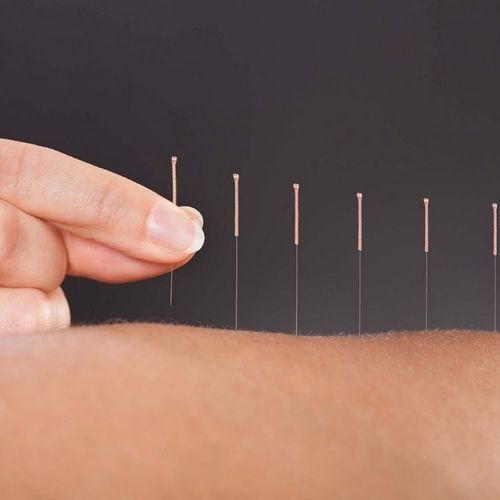I started getting weekly acupuncture treatments to relieve chronic pain in my neck and lower back and to ease the acute pain that crops up in different places from one day to the next. I had tried physical therapy and chiropractic but was disappointed with the results.
The acupuncture has been very helpful. Though the pain is not gone, it is much less intense and acute pain subsides much more quickly.
Friends' ears always perk up when I mention acupuncture. Questions abound, especially about how it feels to have needles in my skin. Because I have had such success with the treatments, I wanted to share my experiences so that anyone considering acupuncture will know more about it.*
*The premise of acupuncture: Energy, or qi (pronounced "chee"), runs through the body in channels, or meridians. When this energy is disturbed (either too much flow, too little or stuck), symptoms appear on an emotional and/or physical level. By inserting needles in acupuncture points, which lie along the meridians, the energy is balanced and the body begins to heal.
I go for treatment first thing in the morning. Usually, I lie on my back. The needles are inserted into the tops of my hands around my thumb and forefinger, my shins, the tops of my feet and at various spots on my head. Sometimes the needles hurt a bit when they go in, but that pain passes immediately. Then, as long as I don't move, I don't feel them at all. (I've never actually seen the needles inserted—I keep my eyes closed.)
Occasionally I feel a sort of oozy warmth when the needles are inserted-especially at the top of my head. Though wide awake when I arrive for treatment, I fall into a deep sleep while the needles are in.
Acupuncture needles are much thinner than the ones used for vaccinations. Though the needle size depends on where the needles are placed, my acupuncturist—Joan-Ellen Macredis, ND, LAc, a licensed acupuncturist and naturopathic physician in Stamford, Connecticut—says that most often they are only one or one-and a-half inches long and no wider than a cat's whisker. The FDA requires that they be sterile, nontoxic and used only once and then safely discarded.
Each needle goes into a tube like holder. The acupuncturist then taps the top of the holder to insert the needle about one-quarter inch into the skin. The holder is removed and the needle is left in place for about 20 minutes. In people with weaker energy, such as older people, Dr. Macredis uses fewer and finer needles and leaves them in for a shorter period of time.
Coworkers are surprised to see that I often leave the acupuncturist with several needles still in the top of my head and keep them in until I get home. My jaw dropped the first time Dr. Macredis suggested it, but it doesn't bother me now, because it really does relieve my pain. The results are literally instantaneous as soon as these needles are in. To remove them, I simply pull them out and discard them in a special container.
Dr. Macredis notes that acupuncture can be beneficial for many conditions, including asthma, carpal tunnel syndrome, headaches, osteoarthritis, tennis elbow and poststroke recovery. Not all insurers cover acupuncture, but many do (mine does). Be sure to ask. But don't be afraid to try acupuncture if insurance doesn't cover it. Some practitioners offer fees on a sliding scale.
To find a practitioner: Ask for referrals from physicians or friends (I found Dr. Macredis through colleagues at worD. The American Academy of Medical Acupuncture (www.medicalacupuncture.org) maintains a database of MDs who are certified to practice acupuncture—or you can use the database at the \(reb site of the American Academy of Acupuncture and Oriental Medicine (www.aaaom.edu) to find a licensed acupuncturist in your area.
